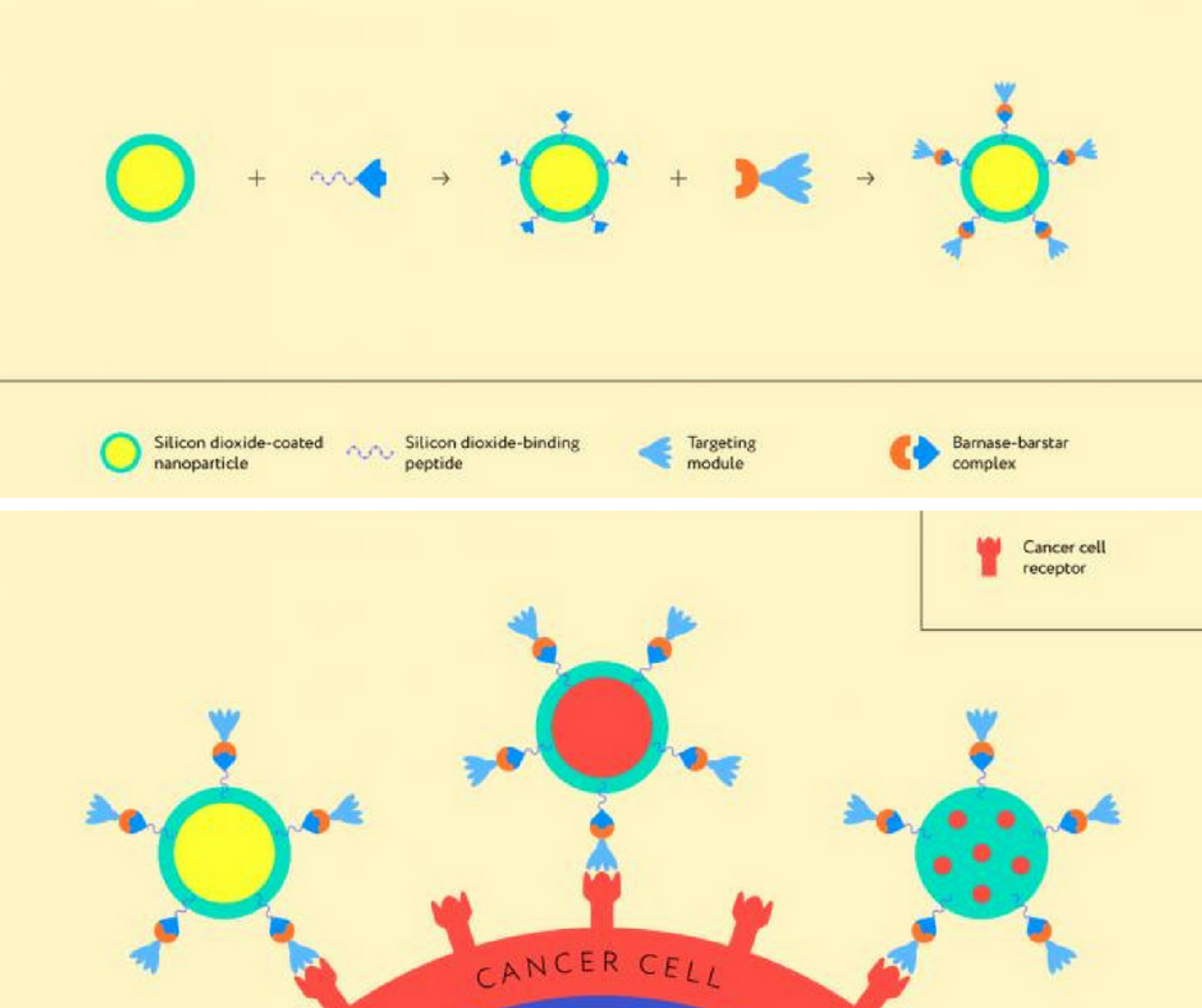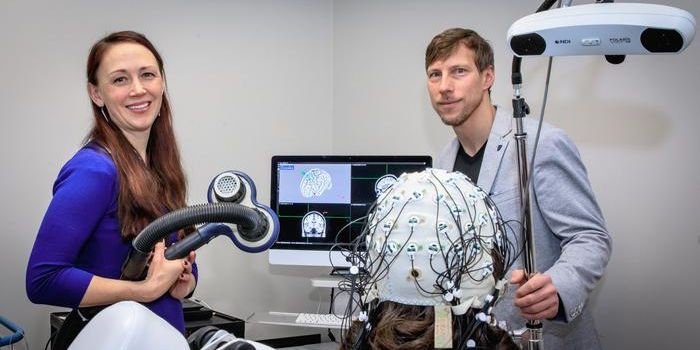Nanoparticles Deliver "Theranostics" for Cancer Patients
New technology combing therapeutic agents and diagnostics (theranostics) can be used to deliver drugs to cancer cells. From the Moscow Institute of Physics and Technology, scientists demonstrate how their new nanoparticle design can be used to identify and target HER2/neu cancer cells.
In the new study, researchers use a unique protein pair, barnase-barstar, to “glue” together therapeutic and diagnostic components to make one, “theranostic” drug. Barnase and barstar and small, single-chain proteins produced by the organism Bacillus amyloliquefaciens. The barnase-barstar protein complex is significantly stronger than the antigen-antibody complexes used by our own immune systems to target specific pathogens.
"Most of the currently used methods for chemically coupling biomolecules to nanoparticles have serious flaws," explained lead author Victoria Shipunova. "The spatial orientation of the biomolecules is poorly controlled, and they encounter problems when binding to their targets. The density of the coupled molecules is fairly low, and the procedure is time-consuming."
The new technology offers a better alternative: a nanoparticle-based theranostic agent using the barnase-barstar protein complex. This approach leaves alone the spatial structure of the targeting molecules used, is highly specific, and binds quickly to the target proteins.
An important part of the design is the silicon dioxide-coated particles that carry the nanoparticle and protein complex. This particular complex was designed to target cancer cells via a cancer biomarker called HER2/neu, a protein responsible for cell growth and division in healthy cells. HER2/neu turns cancerous when its activity runs rampant due to a genetic malfunction. A type of molecule called a “designed Ankyrin repeat protein” (DARPin) was included in the design to identify HER2/neu.
Researchers also used silicon dioxide-binding peptide molecules to fuse with barstar and bind barnase-DARPin to the carrier particle’s surface. The complex is highly adaptable to new situations and diseases, providing diagnosis and treatment in different contexts. This is possible because each part of the complex can be removed or exchanged to change the properties of the overall complex, to target a different type of cancer or even a different disease.
Researchers thus call their technology “a molecular kit of building blocks,” made possible via their “universal assembly method.”
HER2/neu (human epidermal growth factor receptor 2), a type of receptor kinase, is found in breast and ovarian cancer. Diagnosing a specific tumor as containing HER2/neu can help guide treatment, improving prognosis.
The present study was published in the journal ACS Applied Materials & Interfaces.
Sources: National Cancer Institute, Trends in Biochemical Sciences, Moscow Institute of Physics and Technology









